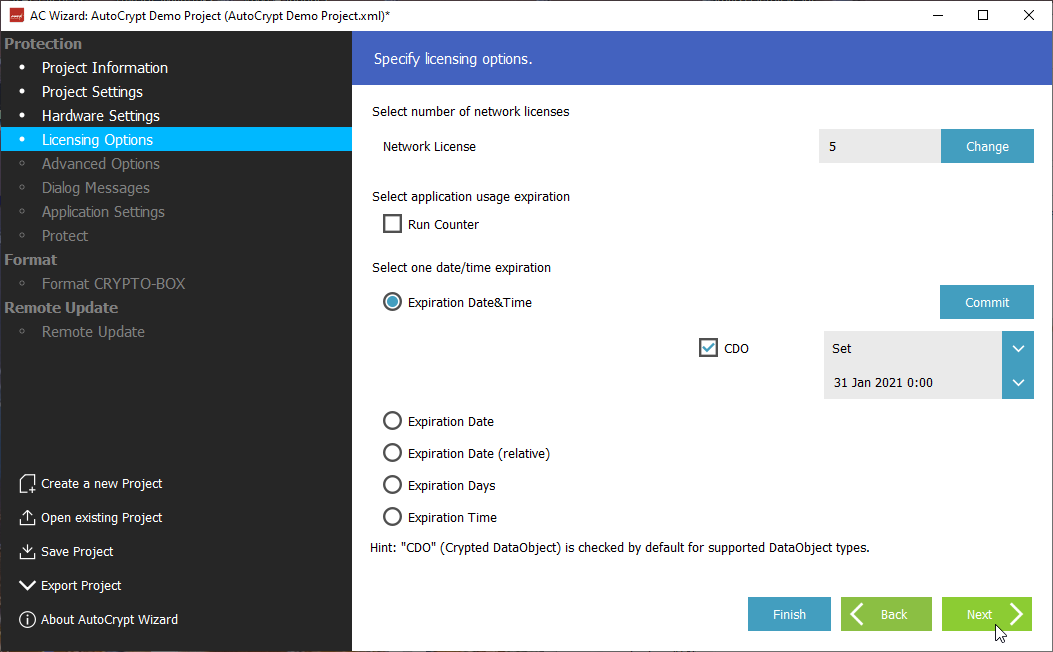Licensing Options
Here you can define required licensing logic for your application by choosing licensing data objects of predefined types, such as Network License, Expiration Date, Run Counter, etc.

If you have chosen the network mode for your project you will have the “Network License” option enabled which allows you to set up the number of network licenses for the application. It defines how many instances of your application can run in a network at the same time. See White Paper “Network Licensing” for more information on Network License Management.
Below the network licensing option you can select between several license expiration options (data objects) for your application:
- To add a licensing option, check corresponding box or radio button.
- To edit the value of a data object, press related “Change”/”Commit” button.
- To remove the data object, click the check box or radio button near data object.
INFO
| For the most DataObjects you have the choice between “CDO” (Crypted DataObject) and standard DataObjects (“CDO” deactivated). CDO offers additional protection against manipulations, so we recommend to keep this option activated. If you plan to combine AutoCrypt and API implementation and additionally want to query these Crypted DataObjects via API commands, please check the sample code in our PPK and corresponding readme files for CDO compatibility. Not all API libraries offer CDO support, eg. for older or exotic compilers. Please contact our Technical Support for any questions. |
The following types of licensing data objects are supported:
| Network License | Number of network licenses for the application: Defines how many instances of your application can run in the network at the same time. Important: License counters are supported by the CRYPTO-BOX SC and CRYPTO-BOX XS models only. The CRYPTO‑BOX Versa also offers network support, but the number of network licenses is always unlimited. |
| Run Counter | Number of application executions (runs) |
| Expiration Date & Time | Exact date and time when the protected application is going to expire, for example "31 JAN 2021 0:00". |
| Expiration Date | Fixed expiration date, submitted in the format “31 JAN2021”. This data object type is obsolete and only preserved for compatibility purposes, we recommend to use “Expiration Date & Time” instead. |
| Expiration Date (relative) | Specifies the number of days the application is allowed to be used from the first run. i.e. counter is activated on the first application launch. |
| Expiration Days | “Expiration Days” is a flexible expiration date, submitted as number of days the application is allowed to be used, starting from the day the CRYPTO‑BOX was formatted. |
| Expiration Time | Real-time expiration, submitted as a period of allowed application usage (in seconds). |
INFO
| You can update the licensing data in the CRYPTO-BOX later with Remote Update. |
Click “Next” to proceed to the “Advanced Options” screen.